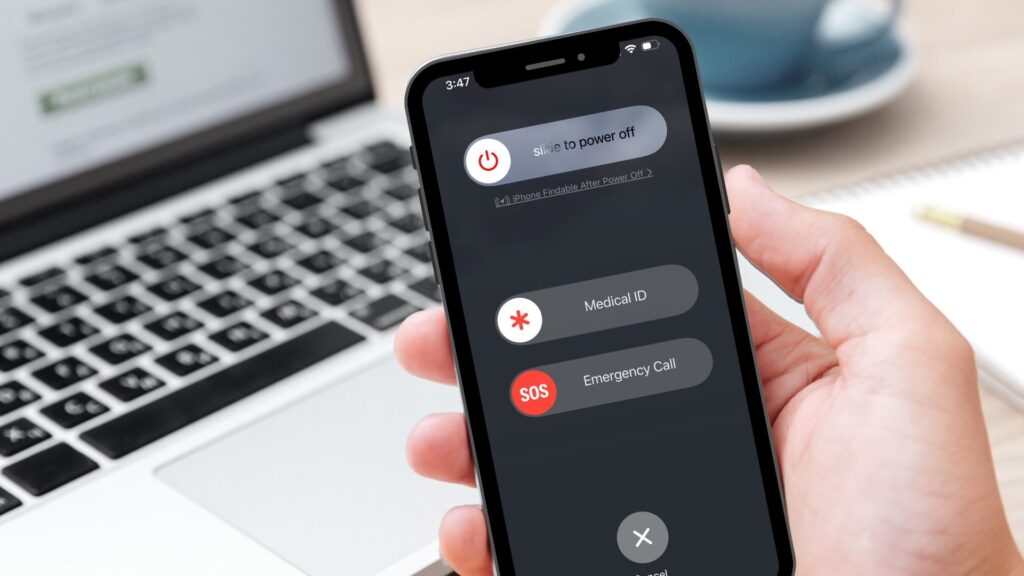There are several things to remember when placing an emergency call to 911. Besides staying calm and giving the operator the most accurate information, remember that they also need a location to ensure they dispatch someone to the correct address, especially when calling them wirelessly. When emergency services get calls from a landline, they can easily trace the exact location, even if the caller doesn’t know it.
Therefore, give them as many landmarks as possible when you cannot provide an accurate address, including street and building names.
Nowadays, most 911 emergency calls are made from cell phones for indoor and outdoor emergencies. The reason is that the number of mobile users has grown exponentially, and most people don’t even have a landline anymore.
However, since most people lock the keypads of their cell phones, what happens if someone forgets the code to unlock the screen or doesn’t know it? How can you place a 911 emergency call from a locked cell phone?
What to Expect When Calling 911?
Understanding what to expect when calling 911 is crucial for effectively handling emergencies. In the following YouTube short, our instructor demystify the process, covering everything from what information to provide to how dispatchers handle your call. Whether you’re preparing for a crisis or seeking clarity on emergency protocols, this video offers valuable insights to ensure you’re ready to navigate critical situations with confidence. Watch now to learn more about the vital role of 911 and how to best communicate during emergencies.
Unlocking a Cell Phone to Place a 911 Emergency Call
Placing a 911 call without entering a code into a locked mobile is very easy. You can also teach your children to do it. Depending on the cell phone type, you can see the word “Emergency” on some part of the keypad or screen when looking at a locked phone. When a person presses the word “Emergency,” the mobile phone bypasses the protection offered by the password and reveals the number pad. The person making the emergency call can dial 9,1,1 by tapping on the numbers and pressing the green or dial button. Mobile technology has made it as fast and easy to place an emergency call from a cell phone as a landline.Precautions to Remember
Unfortunately, 911 emergency services receive thousands of accidental calls daily, tying up their operators and preventing them from helping people in a real emergency. Therefore, when not using your phone, lock it to ensure you don’t dial the number by mistake. Additionally, teach your children never to call the number except when facing a real emergency like a fire, medical emergency, robbery, car accident, and other dangerous threats to a person or property.Emergency Situations for Calling 911
Governments globally adopted emergency numbers like 911 for emergencies. Canada adopted it in 1972, with the first call made in 1974 from London, Ontario. An operator receiving a 911 call listens to the information provided and transfers the call to the relevant emergency services, waiting on the line until the connection takes place. The system’s design ensures all calls get answered and recorded. People can even call for free from a pay phone. Furthermore, a cell phone does not need a SIM card to place an emergency call to 911. Here are some of the emergencies that warrant a call to 911: Chest Pains – Indigestion and overindulging in your favorite meal can cause chest pains. Still, when combined with other symptoms, including dizziness, cold and clammy skin, and numb hands and fingers, you must immediately call 911. Serious Bleeding – A small cut on the finger does not warrant a 911 call, but a deep wound with profuse bleeding anywhere on the body means something serious has happened. Immediately call 911. Slurred speech and sudden severe headache – A sudden headache with slurred speech often spells something more serious than a gradual headache that develops through the day. Always call 911 in this type of situation Potential head/neck/spine injury – Any accident or fall can cause problems in the future, especially if the person hits their head. It’s best to ensure everything is fine after an accident because things usually only start to hurt after a few hours. Don’t let an injury get out of hand; call 911 after a car accident, slip or fall.
Unconsciousness – When someone near you is unconscious or semi-conscious, you need to take immediate action because they probably have reduced blood supply to the brain. Call 911 immediately.
Difficulty breathing – Nobody can survive without oxygen. If you have someone near you with breathing difficulties, don’t hesitate to call 911 because they need immediate assistance.
Don’t call for problems that don’t constitute an emergency– You cannot call 911 for help with filling in your income tax, for minor illnesses, when your power is out, or if your pet needs first aid. Only call for real emergencies to ensure only people with serious issues get help.
Now that you know when to call 911 remember that there are some facts you need to provide when making the call. These include your name, address, and correct phone number to make it easy for emergency services to locate or contact you for further information. Furthermore, the operator will want to know how many people are injured or ill and the extent of their injuries or symptoms. The operator will immediately proceed to help you based on this information, and you need to follow any instruction given to you closely.
Potential head/neck/spine injury – Any accident or fall can cause problems in the future, especially if the person hits their head. It’s best to ensure everything is fine after an accident because things usually only start to hurt after a few hours. Don’t let an injury get out of hand; call 911 after a car accident, slip or fall.
Unconsciousness – When someone near you is unconscious or semi-conscious, you need to take immediate action because they probably have reduced blood supply to the brain. Call 911 immediately.
Difficulty breathing – Nobody can survive without oxygen. If you have someone near you with breathing difficulties, don’t hesitate to call 911 because they need immediate assistance.
Don’t call for problems that don’t constitute an emergency– You cannot call 911 for help with filling in your income tax, for minor illnesses, when your power is out, or if your pet needs first aid. Only call for real emergencies to ensure only people with serious issues get help.
Now that you know when to call 911 remember that there are some facts you need to provide when making the call. These include your name, address, and correct phone number to make it easy for emergency services to locate or contact you for further information. Furthermore, the operator will want to know how many people are injured or ill and the extent of their injuries or symptoms. The operator will immediately proceed to help you based on this information, and you need to follow any instruction given to you closely. Inquire about First Aid & CPR Training Course
Certify for First Aid training learn skills that increase their confidence and willingness to respond to others in a crisis as you complete the course with us. Call our toll-free number to know more.
What to Do While Waiting for EMS to Arrive
Once you have placed the 911 call, you need to remember the following as you wait for help to arrive:
Stay calm – The calmer you remain, the easier it is to carry out the instructions provided, and the calmer you can keep the injured or ill person. Keep them quiet by giving comfort, which often helps prevent a deterioration in their condition.
Make the space safe and accessible – Once emergency services arrive, you want to ensure they can enter the area. Therefore, unlock the doors and contain any pets to prevent them from barking or biting the responders. Pets love their owners and may think that the responders are trying to harm an injured or ill person.
Clear the way – Emergency services will want to work quickly and efficiently, so make sure to remove any items that may hamper their work. Try to get help from others for heavier items.

First Aid Training with Coast2Coast
Calling 911 can help save a life, but a first aid training course can also give you skills to help others in any emergency. Coast2Coast provides Canadian Red Cross first aid courses across the Greater Toronto Area and Eastern and Western Ontario cities.



















